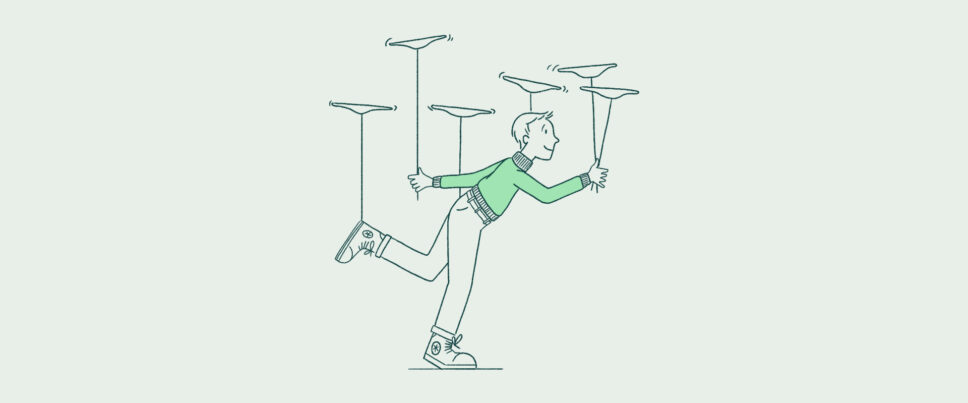
They say “you can’t outrun a bad diet” – well, there’s scientific evidence to back this claim up. An analysis of over 700 weight-loss studies showed that participants who focused solely on their diets lost nearly four times more weight than those who only focused on exercising more.
Before we go any further, I want to point out that by “diet” we don’t mean the kind that restricts you from eating certain foods – because those diets don’t work. We’re simply talking about your dietary intake – your everyday eating habits and behaviours.
Over the next three weeks, we’ll lay out the foundations that will help you develop healthy eating habits which honour your hunger and body, while still bringing you joy. People often don’t realise how important the joy of eating is, but it’s essential if you want to stick to your goals!
The Plate Method
Making changes to your eating habits when you’re trying to lose weight doesn’t have to be complicated. A simple but effective tool to try is the Plate Method. It shows you how to portion your meals and snacks so that you hit your weight-loss goals without having to starve yourself.
A research study aiming to evaluate the effectiveness of the Plate Method in individuals trying to loose excess weight split participants into two groups. The group which was advised to follow the Plate Method lost 18 times more weight than the control group – yes, 18 times!
The Plate Method divides your plate into four sections:

Non-starchy vegetables
This section should make up half of your plate. These vegetables are high in fibre helping you feel full but their high water content means they’re low in calories. Aim for a variety of colours to enhance your nutrient intake.
Protein
This section should make up about a quarter of your plate. Protein is the most filling – or satiating – of the three macronutrients (the others are fats and carbohydrates) so it will keep you feeling full for longer. Choose lean proteins like chicken (with the skin removed), fish or tofu.
Carbohydrates
This section should make up about one-quarter of your plate as well. Opt for complex carbohydrates like whole grains, starchy vegetables, and beans or legumes. They’re high in fibre so they have numerous health benefits and will help you feel full.
Healthy fats
These should only comprise a thumb-sized portion of your plate or 1 tsp of oil. Healthy fats (mono-unsaturated and poly-unsaturated fats) are an important part of a balanced diet and can help you lose weight. Choose fats like avocado, nuts or seeds, and oils such as olive oil.
Take Action ⚡
Applying the Plate Method at home is easy, but how can you make it work with food you didn’t make? Look at the menus of your favourite takeaway places or restaurants and ask yourself what you could order that would follow the model.
Let’s take an Indian takeaway as an example:
½ plate: Vegetable side dish (not one with aloo/potatoes) or salad
¼ plate: Tandoori meats or a curry (plating up the protein with some sauce)
¼ plate: Rice or some naan bread
Now that you know how to balance your meals, let’s talk about snacks. Snacks can be a great way to tide you over between meals and prevent overeating. It’s just as important to make sure that your snacks are balanced – with the same ratio of protein, carbs and non-starchy vegetables. You could, for example, have a hard boiled egg with whole grain crackers and carrots sticks, or Greek yoghurt with berries and a handful of almonds.
By following this simple method, you can easily create healthy, balanced meals that will help you reach your weight-loss goals.
Jayawardena R, Sooriyaarachchi P, Punchihewa P, Lokunarangoda N, Pathirana AK. Effects of “plate model” as a part of dietary intervention for rehabilitation following myocardial infarction: a randomised controlled trial. Cardiovasc Diagn Ther. 2019 Apr;9(2):179-188. doi: 10.21037/cdt.2019.03.04. PMID: 31143640; PMCID: PMC6511685.
While we've ensured that everything you read on the Health Centre is medically reviewed and approved, information presented here is not intended to be a substitute for professional medical advice, diagnosis, or treatment. It should never be relied upon for specific medical advice. If you have any questions or concerns, please talk to your doctor.




